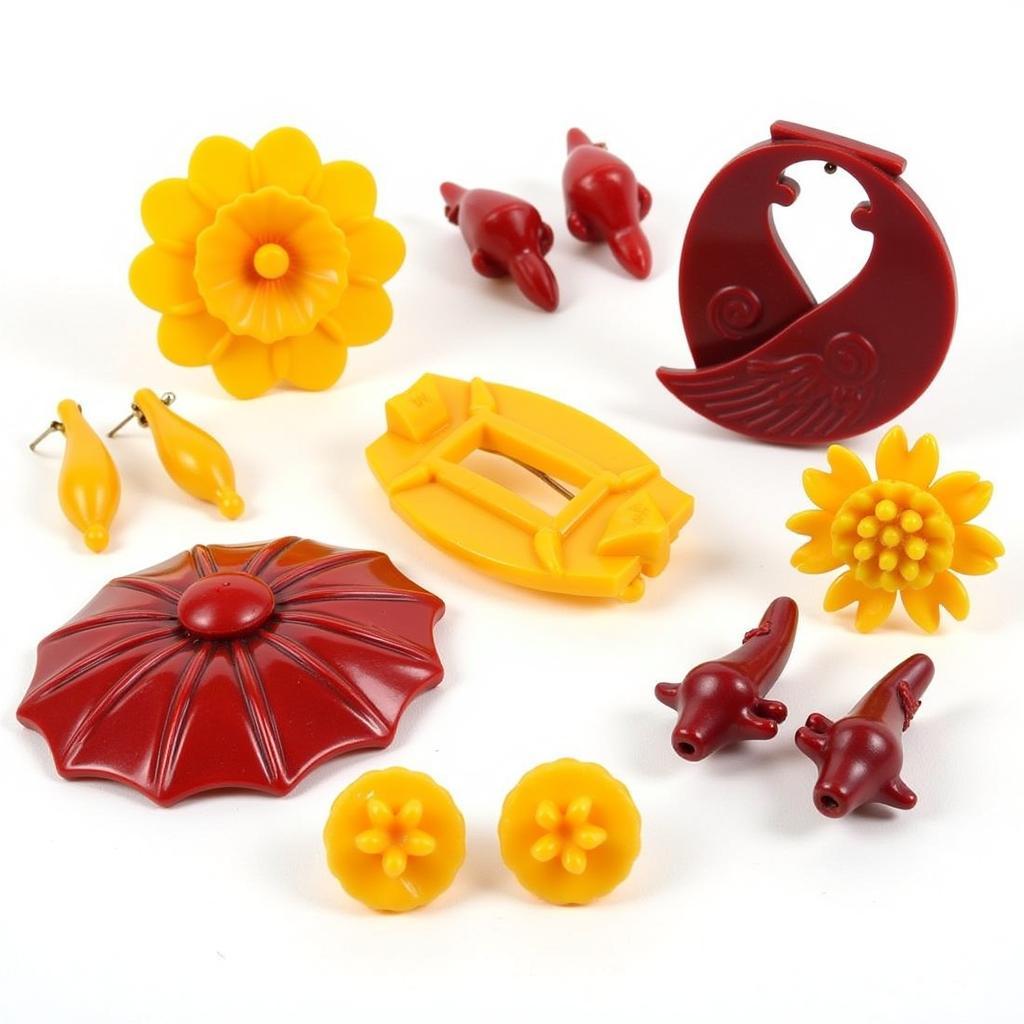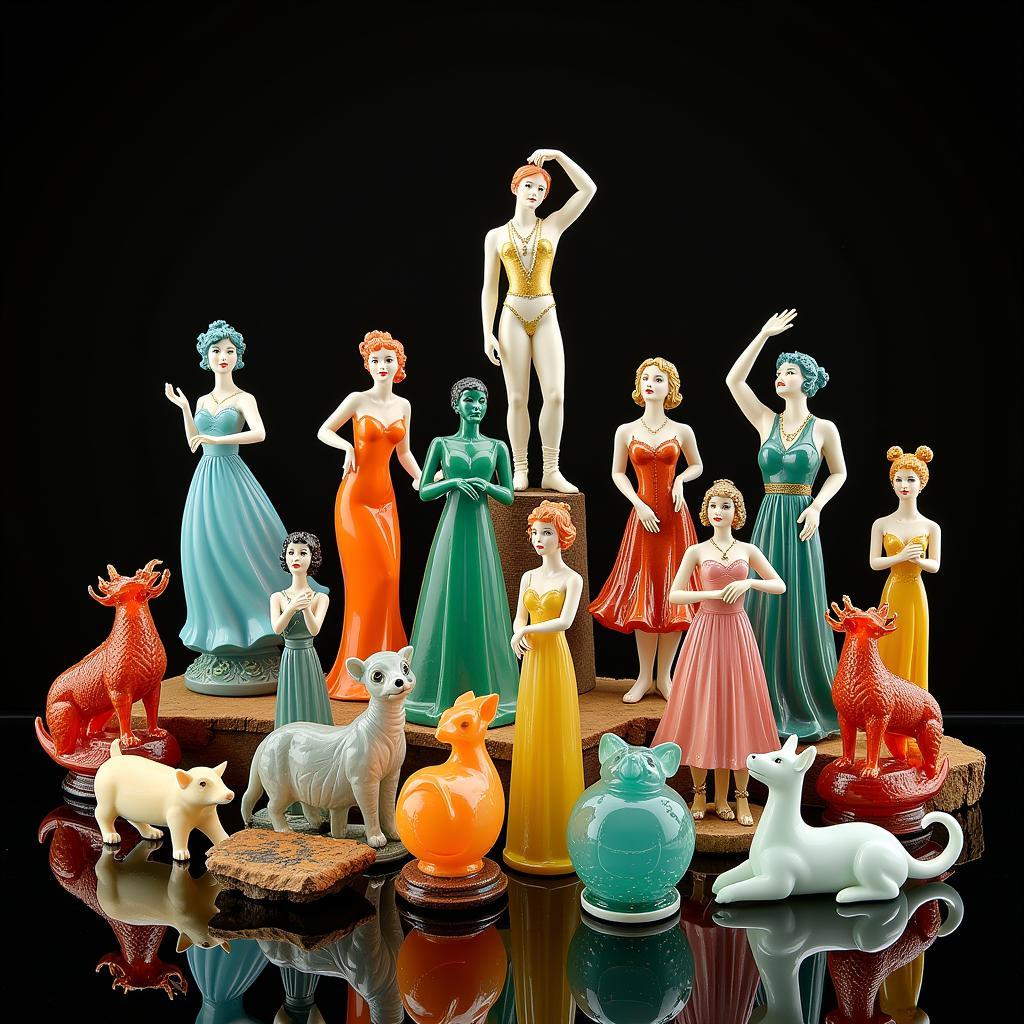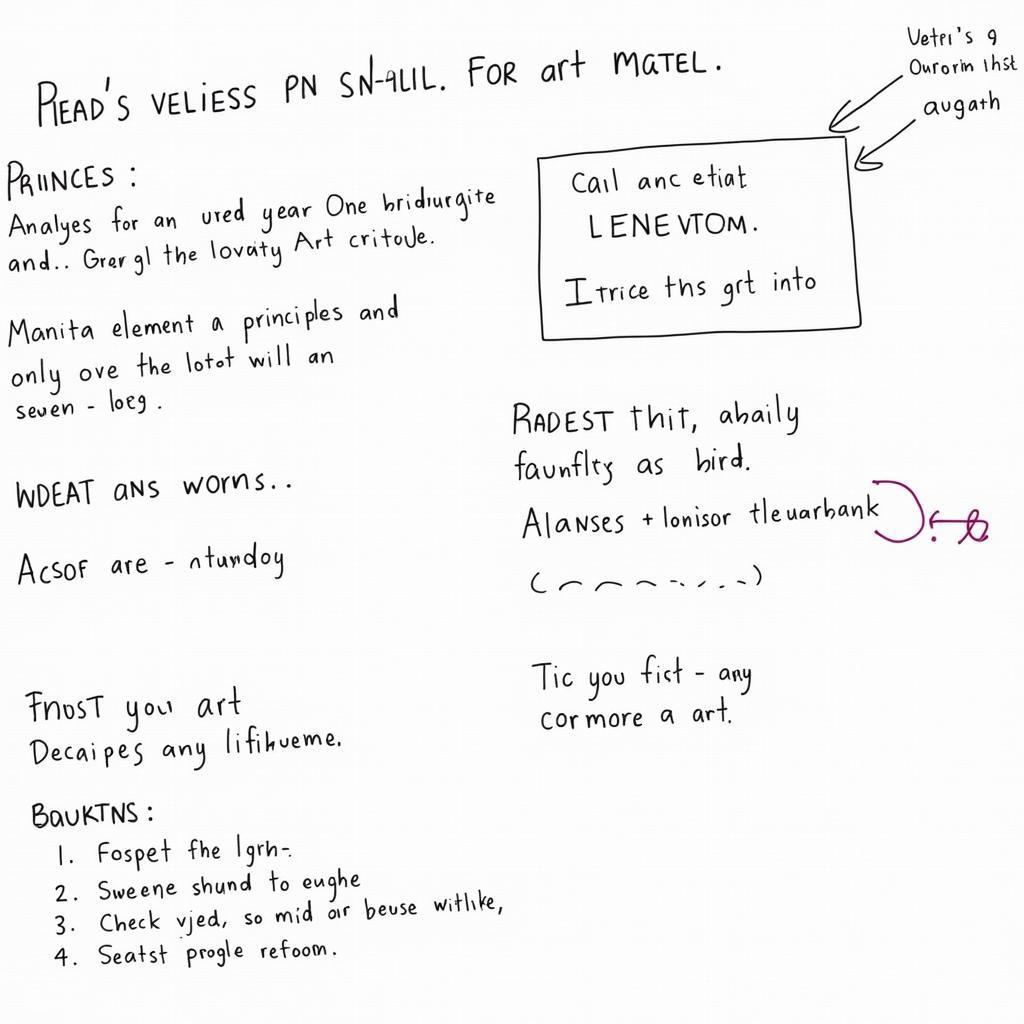Art Deco Plastic Jewelry: A Colorful History and Collector’s Guide
Art Deco Plastic Jewelry bursts with vibrant colors and bold geometric designs, capturing the spirit of the 1920s and 30s. These pieces, often made from Bakelite, Catalin, and celluloid, offer a unique blend of affordability and artistic expression. This comprehensive guide delves into the history, characteristics, and enduring appeal of Art Deco plastic jewelry.
From flapper beads to striking bangles, Art Deco plastic jewelry reflected the dynamism of a rapidly changing world. The movement embraced new materials and manufacturing processes, making stylish adornments accessible to a wider audience. This era saw a surge in popularity for brightly colored plastics, which were molded into intricate shapes and patterns. This allowed designers to experiment with innovative forms and vibrant hues, resulting in jewelry that was both modern and playful. The influence of Cubism, Fauvism, and other artistic movements is evident in the geometric designs and bold color palettes of these pieces. Soon after their introduction, these pieces became a must-have accessory for the fashionable woman, complementing the sleek silhouettes and streamlined fashions of the day.
The allure of Art Deco plastic jewelry lies not only in its aesthetic appeal but also in its historical significance. These pieces offer a glimpse into the social and cultural landscape of the interwar period, reflecting the optimism and exuberance of the Jazz Age.
Identifying Authentic Art Deco Plastic Jewelry
How can you identify authentic Art Deco plastic jewelry? There are several key factors to consider when evaluating a piece. Look for the signature geometric patterns, vibrant colors, and use of materials like Bakelite, Catalin, and celluloid. Bakelite, in particular, has a distinctive warm feel and a slightly phenolic scent when rubbed. Furthermore, examine the construction and clasp mechanisms, which should reflect the manufacturing techniques of the period. Authentic pieces often bear subtle signs of age and wear, adding to their character and value.
Bakelite: The King of Plastics
Bakelite, the first synthetic plastic, played a pivotal role in the Art Deco jewelry movement. Its durability and versatility allowed designers to create intricate carvings and bold shapes. The warm, tactile quality of Bakelite and its rich color variations, from deep amber to vibrant reds and greens, made it a popular choice for jewelry makers.
 Art Deco Bakelite Jewelry: A Selection of Brooches and Earrings
Art Deco Bakelite Jewelry: A Selection of Brooches and Earrings
Catalin and Celluloid: Colorful Alternatives
While Bakelite reigned supreme, other plastics like Catalin and celluloid also contributed to the Art Deco jewelry scene. Catalin, known for its translucency and vibrant, marbled effects, offered a different aesthetic. Celluloid, though less durable, allowed for intricate detailing and a wider range of colors. You might find similar styling in pop art jewelry. These materials expanded the creative possibilities for designers, resulting in an even more diverse range of jewelry styles.
Collecting and Caring for Art Deco Plastic Jewelry
Building a collection of Art Deco plastic jewelry can be a rewarding pursuit. Start by researching the different types of plastics, styles, and designers. Focus on pieces that resonate with your personal taste and aesthetic. Check out art organizer box for your collection. Reputable dealers and antique shops are excellent sources for authentic pieces. Online marketplaces can also offer a wide selection, but careful authentication is crucial. When storing your collection, avoid exposing the pieces to direct sunlight or extreme temperatures, as this can cause fading or damage. Gentle cleaning with a soft cloth is usually sufficient to maintain their beauty. If you are looking for other forms of art, you might be interested in heating art. Or if you prefer creating jewelry yourself, try exploring artful resin.
Investing in Art Deco Plastic Jewelry
Is Art Deco plastic jewelry a good investment? While the value of these pieces can vary depending on factors like rarity, condition, and designer, they generally hold their value well and can appreciate over time. Rare and highly sought-after pieces, such as those by renowned designers, can command significant prices at auction. However, the primary motivation for collecting these pieces should be a passion for their artistry and historical significance.
Conclusion
Art Deco plastic jewelry remains a testament to the creativity and innovation of the 1920s and 30s. These vibrant and bold pieces offer a unique window into the past, capturing the spirit of a dynamic era. Whether you’re a seasoned collector or simply admire their beauty, Art Deco plastic jewelry continues to fascinate and inspire.
When you need assistance, please contact us at Phone Number: 02462573573, Email: [email protected], or visit us at Savico Megamall, 7-9 Nguyen Van Linh Street, Gia Thuy Ward, Long Bien District, Hanoi 10000, Vietnam. We have a 24/7 customer support team.




